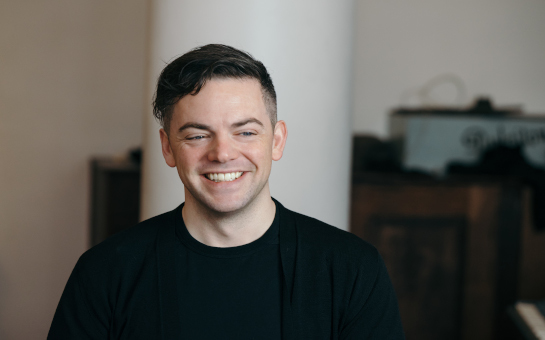- Nico Muhly
Piano Concerto (2024)
- St. Rose Music Publishing (World)
Commissioned by the San Francisco Symphony.
- pf + 1+pic.2(II:ca).2(II:Ebcl).1+cbn/2.2.1+btbn.1/timp.3perc/cel.hp/str
- Piano
- 25 min
Programme Note
The piece is divided into a traditional structure of fast-slow-faster. The first movement is pulse-based, with a motoric and vaguely antagonistic relationship between the soloist and the orchestra. Eventually, we start to hear fragments of music by Rameau (1683-1764), whose Nouvelles Suites de Pièces de Clavecin (1726) are a longtime obsession of mine. I’ve always loved the near-constant tension in Rameau’s work between very expressive elegance and mechanical music which can almost feel like a clever wind-up toy. The same tension exists in Ravel. In the first movement, fragments of two frisky Rameau pieces appear, coming in and out of focus (La Poule and Le Tricotets), which frame a central slower section which presents, in the harp and oboe, a very slowed down version of a Rameau Minuet, which I’ve long thought to be one of his more soulful and beautiful pieces. Here, ornamentation is brought to the forefront, as a nod to Alexandre Tharaud’s ability to make even heavily ornamented lines absolutely crystalline.
The second movement begins with the simplest possible piano writing: four- or five-note chords, only whole notes, in a lazy 32-bar cycle which is repeated four times over the course of the movement. Eventually, the orchestra begins to antagonize the soloist, playing unstable and somehow dangerous glissandi, blurring the pitch and creating a sense of uncertainty around the simplicity of the piano writing. The piano ultimately joins the orchestra in making a raucous noise. From this emerges a passage of absolute stillness, with the piano playing distant triplets.
The third movement returns to the pulse-based economy of the first movement, but here, the soloist and the orchestra have resolved their differences and are in lock-step with one another. Instruments jump in and out of the conversation, often playing in unison with the soloist. A solo viola takes on a prominent role. Fragments of Rameau appear and vanish back into the texture. The piece ends joyfully, with pulses traded around the orchestra.
‒ NICO MUHLY
Scores
Features

- Spotlight on Nico Muhly
- Explore Nico Muhly's expansive and varied catalogue as we put his work under the spotlight.
Reviews
More Info

- New Muhly Piano Concertos for Tharaud and Tendler
- 24th September 2024
- Coming up this season are two new piano concertos by Nico Muhly, written for Alexandre Tharaud and Adam Tendler.

 Located in the UK
Located in the UK
 Located in the USA
Located in the USA
 Located in Europe
Located in Europe